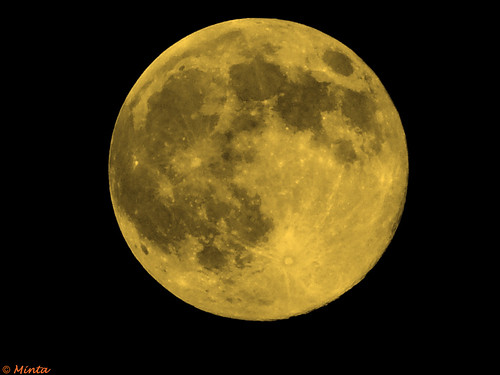


The Hunter's Moon and Harvest Moon are not brighter, smaller, or yellower than during other times of the year. But all full moons have their own special characteristics, based primarily on the whereabouts of the ecliptic in the sky at the time of year that these moons are visible. The full moons of September, October, and November, as seen from the northern hemisphere - which correspond to the full moons of March, April and May as seen from the southern hemisphere - are well known in the folklore of the sky.
In general, the moon rises about 50 minutes later each day, as it moves in orbit around Earth. All full moons rise around the time of sunset. The Harvest Moon and Hunter's Moon are special because - as seen from the northern hemisphere - the time of moonrise on successive evenings is shorter than usual. In other words, the moon rises approximately 30 minutes later, from one night to the next, as seen from about 40 degrees N. latitude, for several evenings around the full Hunter's or Harvest Moons.
Thus there is no long period of darkness between sunset and moonrise, around the time of these full moons. In times past, this feature of these autumn moons was said to help hunters tracking their prey (or, in the case of the Harvest Moon, farmers working in the fields). They could continue tracking their prey (or bringing in their crops) by moonlight even when the sun had gone down. Hence the name Hunter's (or Harvest) Moon.
The reason for the shorter-than-usual rising time between successive moonrises around the time of the Harvest and Hunter's Moon is that the ecliptic - or plane of Earth's orbit around the sun - makes a narrow angle with respect to the horizon in the evening in autumn.
In the northern hemisphere, the Hunter's Moon appears in October or November, usually in October. Traditionally, it was a feast day in parts of western Europe and among some Native American tribes, called simply the Feast of the Hunter's Moon, though the celebration had largely died out by the 1700s. There is a large historical reenactment by that name in Lafayette, Indiana during the early part of October.
Niciun comentariu:
Trimiteți un comentariu